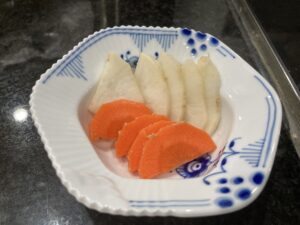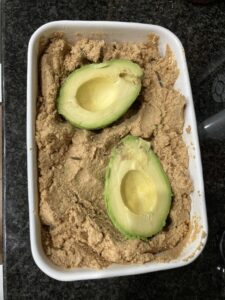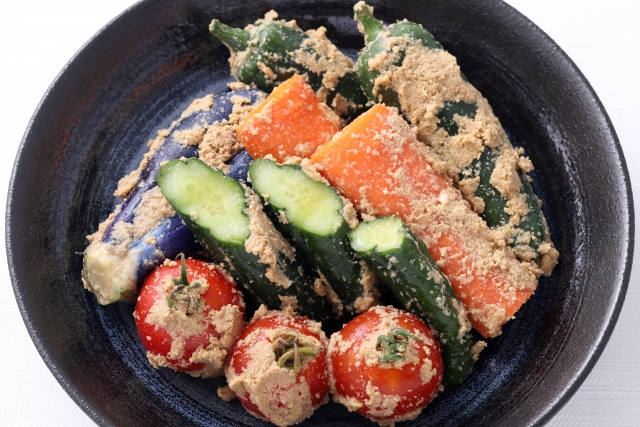What is Nukaduke? Japan’s Crunchy Fermented Treasure with a Surprising Modern Comeback
Have you heard of nukaduke (糠漬け)—the crunchy, tangy Japanese pickles made from rice bran? Once considered a traditional food from the past, nukaduke is now making a quiet comeback, especially among people interested in gut health and natural living. Pronunciation is like nu-ka-zoo-kay, not duke in sense of aristocrats.
That’s how I discovered it—through my interest in digestive wellness. While nukaduke has the reputation of being fussy and old-fashioned, starter kits make it easier than ever to get started. I personally chose to ferment mine at room temperature, the traditional way—but I’ll tell you more on my nukaduke journey in another post.
For now, let’s explore what nukaduke really is, and why it deserves a place at the global fermentation table.
A Unique Pickle Made with Rice Bran
Unlike vinegar-based Western pickles, nukaduke is created through natural lacto-fermentation in a bed of nuka—roasted rice bran. Vegetables like cucumbers, carrots, or daikon radish are buried in this nuka bed, where they slowly ferment, gaining probiotics, enzymes, and a rich umami flavor.
The fermentation medium, called the nukadoko, (糠床) must be stirred daily to keep it oxygenated and active. Each nukadoko becomes unique over time, developing its own flavor profile depending on the household and care given.
Not as Ancient as It Seems: The Surprising History of Nukaduke
Although nukaduke feels like a timeless part of Japanese culture, it may surprise you to learn that its history doesn’t go back thousands of years—it began in the Edo period (1603–1868).
Why then?
That was the time when white rice became more common in Japan due to improved rice production, which led to white rice (hakumai) diet. Until then, most people ate brown rice (genmai), which naturally contains more fiber, vitamins, and minerals.
With the widespread switch to white rice came an unexpected problem: nutritional deficiencies—especially a lack of vitamin B1, which led to diseases like beriberi (kakke in Japanese). In response, people began using the discarded rice bran to create pickles that were not only delicious but restored those missing nutrients.
So in a way, nukaduke was born as a practical health food—a form of early nutritional science!
Health Benefits in Every Crunch
Today, nukaduke is gaining attention once again, this time from those interested in gut health, natural fermentation, and microbiome diversity. Thanks to its high levels of lactic acid bacteria, nukaduke acts as a natural probiotic.
It also offers:
- Improved digestion
- Reduce fatigue
- Increased bioavailability of vitamins like B1, B2, and K
For many health-conscious eaters, it’s a perfect addition to the daily diet.
Easy to Try—Even for Beginners
Though some people still see nukaduke as “too much work,” the process is surprisingly simple with the right approach. Nowadays, you can buy ready-made nukadoko kits at Japanese supermarkets or online, or you can grab your first ready-to-eat nukaduke from supermarket shelves (you can find them in pickles section next to kimchi). Some are designed for refrigerator use, while others (like mine) support the traditional room-temperature method.
Basic steps include:
- Setting up a rice bran bed with salt and water
- Letting it ferment with starter vegetables
- Burying your chosen veggies
- Stirring daily to maintain the ecosystem
Once you taste your first homemade nukaduke, the care becomes part of the reward.

carrot and daikon-radish.
A Taste of the Past with Relevance for Today
Nukaduke may have started as a clever nutritional fix in the Edo period, but today it’s becoming a symbol of mindful eating and a return to slow food values. Whether you’re drawn by its flavor, its health benefits, or its cultural depth, nukaduke offers something timeless—and timely.
If this is your first time hearing about nukaduke, would you try it?
In my next post, I’ll share my personal nukaduke setup and how I fit it into a busy lifestyle.


